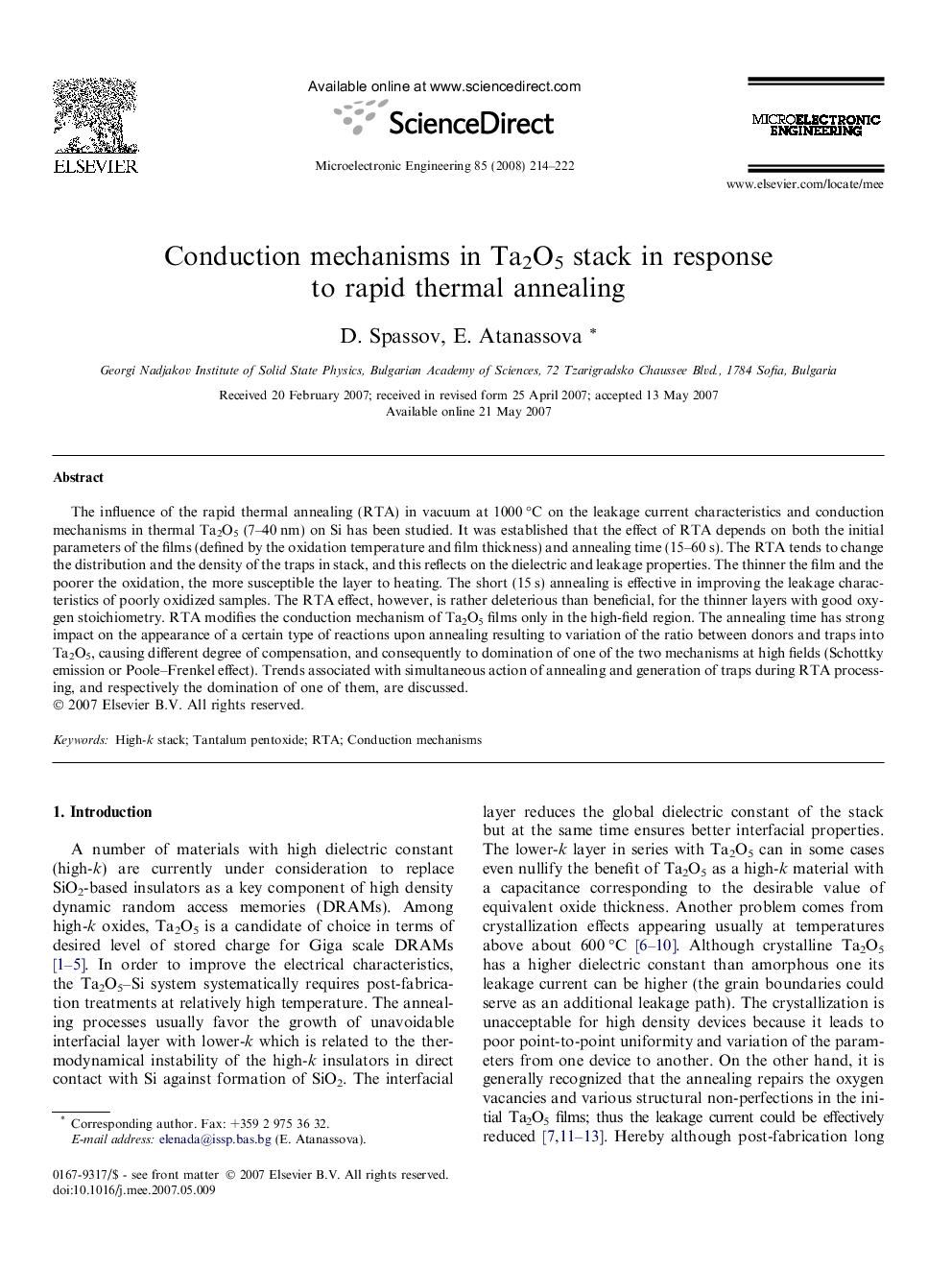| Article ID | Journal | Published Year | Pages | File Type |
|---|---|---|---|---|
| 541715 | Microelectronic Engineering | 2008 | 9 Pages |
The influence of the rapid thermal annealing (RTA) in vacuum at 1000 °C on the leakage current characteristics and conduction mechanisms in thermal Ta2O5 (7–40 nm) on Si has been studied. It was established that the effect of RTA depends on both the initial parameters of the films (defined by the oxidation temperature and film thickness) and annealing time (15–60 s). The RTA tends to change the distribution and the density of the traps in stack, and this reflects on the dielectric and leakage properties. The thinner the film and the poorer the oxidation, the more susceptible the layer to heating. The short (15 s) annealing is effective in improving the leakage characteristics of poorly oxidized samples. The RTA effect, however, is rather deleterious than beneficial, for the thinner layers with good oxygen stoichiometry. RTA modifies the conduction mechanism of Ta2O5 films only in the high-field region. The annealing time has strong impact on the appearance of a certain type of reactions upon annealing resulting to variation of the ratio between donors and traps into Ta2O5, causing different degree of compensation, and consequently to domination of one of the two mechanisms at high fields (Schottky emission or Poole–Frenkel effect). Trends associated with simultaneous action of annealing and generation of traps during RTA processing, and respectively the domination of one of them, are discussed.
